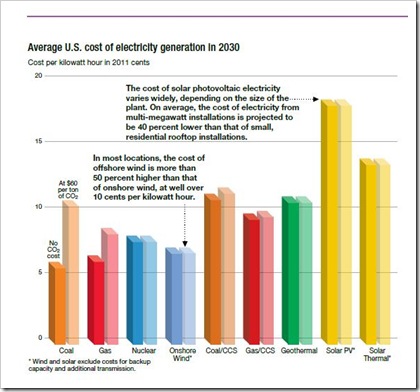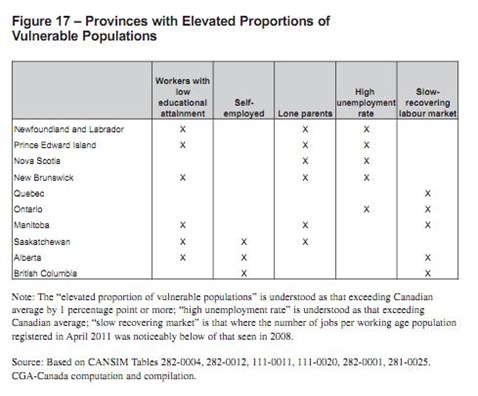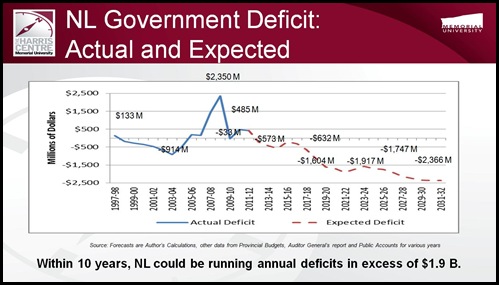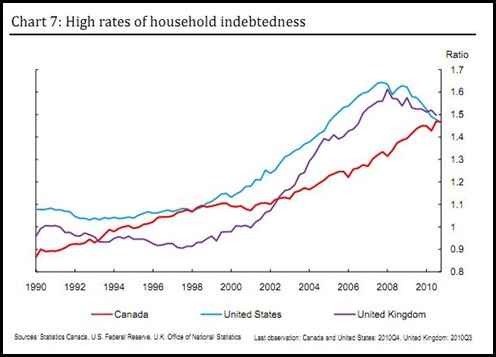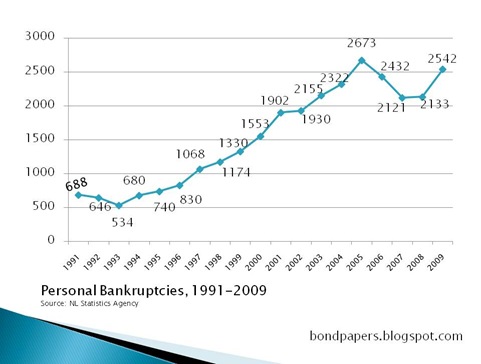The real political division in society is between authoritarians and libertarians.
14 September 2016
The cost of silence #nlpoli
The appropriately-acronymed BOT even held an emergency meeting of some of its members, after which BOT president said his members were in a "sombre mood." Employers' Council executive director Richard Alexander said the changes to the budget plan were "quite scary."
Now flip back a few weeks. Word that bankruptcies in the province were up led a bunch of people to blame last spring's budget. Richard Alexander is in that Telegram story telling folks the government should have slashed spending instead of hiking fees and taxes. There's another comment in there from a local bankruptcy trustee who essentially pulls an "I told ya so". Back in the spring, the same guy warned that the budget would drive up the number of bankruptcies in the province.
That's all nonsense, of course.
15 June 2016
Cash Debt and GDP #nlpoli
You may have heard of comparing the net debt to the gross domestic product. Somebody gave Tracy Perry a bunch of numbers to read out during the recent waste-of-time filibuster. One of the problems with her numbers was that she wasn't always comparing apples to apples. The numbers she used from the 1990s compared cash debt to GDP while the more recent figures use a completely different accounting basis to make comparisons.
There are problems with this, as we've noted before, not the least of which is that oil revenues tend to cloud the picture.So just for the sake of making a comparison, your humble e-scribbler took the GDP figures presented in The economy, a document released with the budget. For debt, let's use the cash debt figures from the Estimates. That'll make it easier to compare apples to apples over the next few posts as we wade through this.
It's all in millions of dollars. In other words, the 31 thousand million means $31 billion.
18 May 2016
A dose of reality for Lorraine and her friends #nlpoli
Lorraine should have been able to find the information for herself.
According to Statistics Canada (CANSIM 204-0001), the top 50% of tax filers in 2013 - all 197,380 of them - earned more than $31,400. They paid an average of $14,200 in federal and provincial taxes and accounted for 94.8% of federal and provincial taxes.
So it isn't much of a stretch to see how a relatively small portion of the folks with an income in the province carry most of the tax burden.
The top 10% of tax filers in Newfoundland and Labrador - 41,865 people - accounted for 51% of the federal and provincial taxes paid in 2013, the last year for which the table gives figures. They paid an average of $36,500 in federal and provincial income taxes. The thresh-hold to get into the 10% club was $89,200, which is less than Lorraine and her colleagues in the House receive as a base pay.
The median tax paid for the top 10% was $28,600. That's an interesting figure because the median pre-tax income for the 418,000 or so people who filed taxes in this province in 2013 was $29,300.
But what about that One Percent Club? Well, the 3,135 folks who made more than $222,000 paid an average of $114,600 in taxes in 2013. They accounted for 12.1% of federal and provincial taxes paid.
At the 50% level, 47% of the tax filing population paid 95% of the taxes. Yes folks, that means about half the folks filing taxes accounted for about five percent of the government's total income tax haul.
At the 10% level, 10% of the tax filers covered 51% of the tax burden.
At the one percent level, 7.5% of the people filing taxes paid 12% of the taxes.
The information in plain view. It's amazing that Lorraine and her friends find it so hard to believe there is no gigantic, secret stash of money hiding in the very small number of people who make a lot of money.
11 June 2014
Pollyanna Peek-a-Boo and the Economic Unboom #nlpoli
Check it out.
Frank Coleman thinks everything is fantastic in Newfoundland and Labrador.
20 May 2014
Always read the large print #nlpoli
The Conference Board of Canada released a report last week that assessed economic performance in each of the provinces in Canada.
“The resource-driven economies of Alberta, Saskatchewan and Newfoundland and Labrador can boast A+ grades for their economic performance,” read the first sentence of the news release accompanying the report, titled How Canada Performs: Economy.
Amazing stuff and more than a few people - most likely provincial Conservatives – stuck their chest out in pride. They should have read the big print in the report. The first sentence is more than a wee bit misleading.
17 January 2014
The Consumer Economy #nlpoli
It’s the sort of thing that leaps out at you.
As SRBP mentioned on Thursday, in her book Shopping for votes veteran political reporter Susan Delacourt put it in stark terms. Consumer spending has accounted for 60 to 70 percent of American gross domestic product since 1980. In Canada, it’s been more like 52 to 58 percent nationally. “So when politicians say that they are focused on the economy,” Delacourt wrote, “what they often mean is that they are focused on getting Canadians to buy stuff.”
Well, here’s a pretty chart to give you some local figures. They come from Statistics Canada CANSIM 384-0038 showing gross domestic product based on expenditure, in constant 2007 dollars.
29 April 2013
Annual GDP Change #nlpoli
A release on Friday from Statistics Canada showed that the provincial economy shrank by almost 5% in 2012. They even supplied a lovely chart to illustrate the GDP changes in each province as well as the national average.
This wasn’t just modest growth or even a modest drop. We are talking one of only two provinces with a drop in GDP and the biggest change – positive or negative – of any province or territory in Canada.
Alberta is even more dependent on commodities than Newfoundland and Labrador and it still managed to see gross domestic product grow by almost four percent.
Not so in the former Republic of Dannystan.
Down.
By almost five percent.
10 October 2012
Remittance Work and the Newfoundland Economy #nlpoli
For those who have been following the issue, SRBP and others were talking about remittance work back in 2007.
It remains a key part of the current administration’s economic policy. The proof is in an airport in western Newfoundland that offers parking facilities for patrons who may be gone for upwards of one year.
-srbp-
14 December 2011
A grain of salt #nlpoli
Around this time of year the country’s major banks issue their economic assessments of the current year and their forecasts of the coming one.
Royal Bank issued the most recent one. Not surprisingly, the bank’s economists are forecasting that the provinces that are most heavily dependent on natural resources will do quite well. Saskatchewan and Alberta will lead the country in economic growth, with Newfoundland and Labrador in fourth place.
RBC’s forecast for 2012 and 2013 has Newfoundland and Labrador in the same relative position. Natural resource prices and capital construction are driving things. Over the next couple of years, new mineral developments will offset declines in oil production, according to RBC. While their reasons may be slightly different, BMO and Scotiabank’s forecasts are all generally similar to RBC’s view.
There’s nothing surprising about any of that. Newfoundland and Labrador has enjoyed phenomenal economic growth for most of the last 15 years. In 2002, for example, the provincial gross domestic product grew 8.2% and in 1998 and 1999, the province led the country in economic growth for two years in a row.
There’s also nothing about the current economic growth that has anything to do with the party currently in power either. Some people would like you to believe otherwise. A great many people in the province believe otherwise. But they are wrong.
What you really need to do when looking at these economic projections is go beyond the short-term and the superficial.
Like oil prices. Current thinking is that oil should be $100 a barrel on average. In 2011, oil prices operated within a pretty narrow band, so if things stay like that, the world should be fine.
But…
The biggest, and more bullish, tail risk is of heightened turmoil in the Middle East and north Africa and, increasingly, in Russia, the world’s second-largest oil producer. An attack by Israel on Iran, for example, could push oil prices briefly towards $250 a barrel, according to some estimates.
Now with production in this province forecast to drop by 20-odd% from 2011, that might get a few people really excited. Russia could be Kathy Dunderdale’s best friend, someone quipped. Oil at $250 a barrel for any length of time would deliver a pretty sweet financial reward into the provincial treasury. Some people might even use it as an “I told ya” moment to justify Muskrat Falls.
Just consider the cost of living with oil at around $100 a barrel, as it is now. Look at the cost of living in all sorts of places, including Labrador West where housing prices are already at crisis levels for a great many families.
Now think of what it would be like with prices driven up by the costs of shipping just about all major consumer goods into the province.
Not pretty, eh?
And for those people who imagine the Americans desperate for cheap hydroelectricity at that point, well, the picture is even less rosy for them.
ExxonMobil produced an interesting energy forecast recently that looks at what the energy world might look like out to about 2040. Electricity demand will grow globally. But in the United States, expect to see more electricity produced by natural gas. There’s plenty of it and new natural gas plants are much more efficient at producing electricity than existing methods.
As for price, well, take a gander at this forecast of the cost of producing electricity in 2030:
Electricity produced from natural gas will be less than half the cost of Muskrat Falls electricity.
Forget about those export sales, gang.
But just imagine carrying the huge debt from Muskrat Falls, paying the electricity prices in this province because the provincial government forced you to pay for it and trying to cope with all the other increased costs coming because oil is more than double what it is today.
You really need to take all this talk of wonder and glory with just a grain of salt. Things are good these days, better than they have ever been. But if we make mistakes today, if we don’t look at the big picture, we can be paying for them tomorrow.
Big time.
- srbp -
06 November 2011
Funny how things come together #nlpoli
First, there’s a new post at the Monkey Cage that notes a discussion in economist circles about public discussions of economic subjects:
… economics lost communication with policymakers and practitioners leaving room for all sorts of “charlatans and cranks” to fill the void. In doing so, academics ceded important ground to think tanks aligned with one party or the other, to self-appointed economic experts, to business economists maximizing profit rather than public knowledge, and to a media that doesn’t always comprehend the economics that underlie a particular issue.
Second, there’s a short piece in the Telegram that torques the latest Statistics Canada labour force stats:
Newfoundland and Labrador is bucking the national trend, adding jobs in October, even after the rest of the country faces higher unemployment.
The bucking of the trend thing is zero point nine percent year-over-year. Not necessarily something to write home about, especially considering the national decline the story runs with is actually an increase in employment of 1.2% year of year as well.
One month decline nationally but a year over year gain. Growth provincially month-to-month and year-over-year.
Unfortunately that doesn’t fit with the accepted narrative of the economic miracle that is Newfoundland and Labrador these days, supposedly.
Third, as if to confirm the generally poor understanding of things economical, there’s the text of a speech Premier Kathy Dunderdale gave to an energy forum in the United States. It includes copious references to the economic miracle thingy, along with a raft of other completely - and demonstrably - false claims about Muskrat Falls.
Fourth, there’s a piece in the Atlantic Institute for Market Studies blog that - purely by coincidence - takes up the economics ignorance theme and relates it to a politician who thinks a remittance economy is a good thing.
Fifth and for those who don’t know, that economic miracle thingy in Newfoundland and Labrador has been built in large measure on shipping workers outside the province and having them ship their paycheques back home. You can get a sense of that, and some of the previous discussions of this from a post at SRBP back in December 2008.
There are parts of the province that are almost entirely dependent on migrant labour and remittance workers.
In others - like Stephenville - the economic disaster of losing a pulp and paper mill on the Premier's watch didn't materialize solely because the workers there could find jobs in Alberta.
But yes, you say, there has been more people coming back to the province since 2007, you say.
At the time, they were coming back in advance of the huge recession. Just as surely they started heading out again as the economy picked up again in other parts of the country.
Sixth, flip back to that first post on economists and public commentary. Follow the link back to the original article. There’s a fascinating discussion about the use and misuse of economic arguments and models.
Just for the fun of it, then, consider:
- the amount of media coverage the most recent pronouncement by a certain economist on the Hebron project even though it was nothing more than an update of previous assumptions using new assumptions and that they are all – wait for it – assumptions.
- Note, in particular, the references to the relatively better prospects for Hebron - heavy sour crude in a highly fractured structure - compared to Hibernia, lots of light sweet crude and a fair bit of natural gas. Despite the fact that Hibernia will generate more than double the economic benefit to the province in terms of royalties over its lifespan than Hebron – even using the most recent assumptions – the lesser of the two is apparently worth more.
- Of course that sort of conclusion has nothing to do with the fact that the same economist criticised Hibernia when it occurred and that his old predictions of horror never showed up, in practice. In no way could his previous, dubious predictions or any other non-economic consideration have in any way influenced his most recent assessment of relative gloriosity for Hebron.
- It’s not like the guy has made some boner projections based on knowledge he acquired from his consulting work for the provincial government and its agencies. Sure he’s talked about debt problems that the provincial government folks might not like but he avoided a discussion of Muskrat because he’s been doing some consulting on the project.
- And it’s not like his public comments for different audiences haven’t sometimes crossed each other much to his embarrassment.
- The one guy has a colleague who has also been known to produce some ideologically tainted bits of commentary.
The media’s relationship to economists is almost as bad as their attachment to the equally dismal science of the pollsters.
But what is truly remarkable here is the way a whole bunch of economist related stuff wound up appearing in different places for different reasons in the same week.
And it all ties together.
- srbp -
16 June 2011
The looming debt problem: update
Canadian household debt is at at record levels according to report by the Certified General Accountants Association.
The latest report adds a new twist to a discussion of the potential risks for consumer debt in this province discussed in a post last week.
Table 17 from the report shows provinces with segments of the population considered to be highly vulnerable for debt growth and financial problems associated with heavy debt loads.
Another table (19 on page 74) shows levels of savings for Newfoundland and Labrador are relatively low. At the same time, house prices increased at the highest average level of all provinces for the period 2007 to 2009.
According to some thinking, the economic vulnerability represented by small savings could be offset by the relatively high level of equity that could be represented in the high house prices. That would theoretically make Newfoundland and Labrador no more risky than Alberta where the savings levels are the highest in the country while house prices have dropped lately.
Small problem.
House prices can shift dramatically while savings and investments tend to hold value over a long period of time.
The summary of that chapter’s conclusions also sounds a strong warning, even allowing that the conclusions are for the country as a whole, not just one province. Incidentally, this is all one paragraph in the report. The layout is changed here to make reading easier:
First, the positive signs of improving labour market conditions portrayed by the unemployment rate and the hiring intentions of firms may be deceptive. Labour market conditions continue to be fairly weak: the market’s ability to keep up with the increase in working age population recovers slowly (and even deteriorates in some of the provinces); the long-term unemployment rate continues to increase while the decline in the proportion of discouraged workers has not yet materialized. Weak labour market conditions may suppress the short-to-medium term growth in earnings while increased and more prolonged absence of employment may decrease individual’s life-long earnings.
Second, certain socio-economic groups (i.e. youth, workers with low educational attainment, lone parents, and self-employed) may be seen as vulnerable as they are faced with higher labour market stress due to elevated likelihood of longer-term unemployment and reduced employment options.
Third, individuals in vulnerable groups that reside in provinces having a weak labour market may be at a higher risk of elevated financial stress.
Fourth, the recent recession and economic recovery brought only slight improvements to the conventional savings out of income; at the same time, accumulation of savings through wealth has been weakening in the past several years. Neither active savings from income, nor passive savings through equity are evenly distributed across provinces and households. The lack (or low levels) of active savings may jeopardize individual’s ability to pay and honour debt obligations in the future.
- srbp -
10 June 2011
Harris Centre economic forum: the media coverage
The Telegram’s James Macleod had a decent front page summary of the Harris Centre’s discussion of economic issues facing the province and the subsequent discussion.
The CBC has a super short version that is already bumped off the front page of its website in favour of stories like one on a baby bear in Terra Nova park, a batch of fake 20s making the rounds on the northeast Avalon and an earth-shattering story about two idiots who stole metal for scrap and found out it was worth more than they thought when they wound up in court for the theft. Talk about if it bleeds, leads.
Anyway, for those in tune with evidently less important issues – how does an multi-billion dollar economic mess compare to two scrap metal dorks? - Wade Locke’s presentation isn’t on line yet but here is the slide likely to be causing a few stomach’s to turn in knots.
It’s Locke’s deficit forecast based on current trends and current government policy:
Within a decade the current account deficit will be running at record levels if the current administration carries on with its policies. We can expect more of the same from the incumbents since finance minister Tom Marshall is already trying to pretend that the mess doesn’t exist or that he has things under control.
Unfortunately for the rest of us, it does and he doesn’t.
- srbp -
09 June 2011
The looming debt problem
The government’s favourite economist is sounding alarm bells about the provincial government’s financial health. The finance minister, on a local talk radio program, sounding stressed as more and more people start talking about what has been obvious to readers of this corner for some years now: the provincial government is in a financial jam and the current crowd running the place have no idea what to do about it.
Well, if they do have an idea, they have no intention of doing anything, at least within the next four or five years.
Part of the charade they’ve been relying on the past few years is the perception that not only are happy days here but they aren’t ever going to leave. In some years, the finance minister hasn’t been above presenting completely laughable forecasts during the Christmas season to keep consumer spending going through one of the most tax-rich seasons of the year.
Just as the proverbial chickens are coming home to roost in Tom Marshall’s office, it may not be too much longer before a fewer fowl start fouling other bits of the province.
Last week local news media mentioned a report on consumer debt. Newfoundland and Labrador saw the largest jump in the country last year – along with Quebec – at 7.8%. As CBC reported, the average consumer in the province owes $23, 372. That doesn’t include household mortgages.
Flip back to March and you’ll find a red flag on that issue. It was a report by the Bank of Montreal that warned Canada’s housing prices were getting perilously close to a “correction”: especially in places where prices were outstripping incomes or if inflation rates changed rapidly.
Marketwatch.com’s Bill Mann summarised it this way:
The cautionary Bank of Montreal report says average home resale prices compared with personal incomes are 14 per cent above the long-run trend, up from last summer, although still below the 21-per-cent peak that preceded the 1989 crash.
But that is not the case in all Canadian real-estate markets. Five provinces are currently in the danger zone, led by Saskatchewan, where the ratio is 39 per cent above historic norms. That province has a booming commodities industry, centered around potash and oil.
Also well above the long-run levels is Newfoundland, 34 per cent higher; British Columbia and Manitoba, 31 per cent, and Quebec, 23 per cent above.
Overall in the province, debt servicing costs are the lowest in the country according to the most recent report from the Certified General Accountants Association of Canada. But that doesn’t mean there aren’t pockets of risk. The CGAA also reported that incomes in the province fell short of previous growth: problem is the year they are referring to isn’t clear, even though the report was issued in 2010.
Just thinking about it for a second, one could easily imagine there are a couple of potential hot spots in the province. The northeast Avalon and western Labrador are experiencing particularly strong growth and that’s where you’d be more likely to see heavy debt loads and high debt to income ratios.
 Not surprisingly, personal debt is one of three issues Bank of Canada deputy governor Jean Boisvin, right, highlighted in a speech in March that Canadians needed to watch as the country emerged from the global recession:
Not surprisingly, personal debt is one of three issues Bank of Canada deputy governor Jean Boisvin, right, highlighted in a speech in March that Canadians needed to watch as the country emerged from the global recession:
Let us start with household debt. Since the beginning of the recovery, household credit has increased at twice the rate of personal disposable income. In the autumn of 2010, Canadian household debt climbed to an unprecedented level of 147 per cent of disposable income (Chart 7).
The relatively healthy financial condition of Canadian households at the beginning of the “Great” Recession helped the Canadian economy to better withstand the initial shocks of the crisis. However, going forward, it is essential to maintain the necessary room to manoeuvre to keep household spending on a viable path. This leads us to believe that the rate of household spending will more closely correspond to future earnings, and certain signs to that effect have already been observed.
Here’s Chart 7 from the speech:
The other two issues were international competitiveness and productivity and investment.
There’s a parallel between the condition of the provincial government’s books and the household accounts in some areas of the province. Just as the provincial government has grown increasing susceptible to small shifts in economic circumstances, so too may more and more households in the province be vulnerable to shifts in the provincial economy.
If the province’s politicians scarcely recognise their own financial problems, it makes you wonder if they might be aware of the issues looming for consumers in the province.
- srbp -
07 June 2011
Building permits down in April
The value of building permits issued in the province in April fell by 16% compared to the same month in 2010 according to information released on Monday by Statistics Canada.
Permits in April 2010 were valued at $94 million and $79 million in April 2011. permit values in February 2011 were more than $85 million and $61 million in March 2011.
Building permits in St. John’s were up for the second straight month. However, April permits were down 8.6% compared to April 2010.
- srbp -
28 April 2011
Economy not sizzling in Tom Marshall’s home town
Finance minister Tom Marshall has always had a curious relationship with reality.
He likes to talk about debt reduction, for example, but he never really does anything about it, or as in his plan for Muskrat falls, he actually wants to increase the public debt by upwards of 50% of its current size.
When Marshall delivered the most recent budget – and set a record for public spending in the process – he told reporters that “our economy is sizzling right now.”
Tom must be referring to Bermuda or Barbados or wherever it is he takes the sun during the colder months.
He certainly isn’t talking about his own district of Humber East.
The Western Star reported on Thursday that the major container line serving the province is dropping Marshall’s home town of Corner Brook from its destinations.
Capt. Sid Hynes told The Western Star Thursday afternoon that export freight from Corner Brook has dropped by around 70 per cent and imported cargo has declined by about 30 per cent in the last five years.
Exports down by 70%.
Imports down by 30%.
Since 2005.
Now it surely doesn’t take an expert to tell that this is not an economy that is sizzling.
Anyone who claims it is sizzling might be fried though.
- srbp -
10 March 2011
Personal Bankruptcies in Newfoundland and Labrador
The following chart shows personal bankruptcies in Newfoundland and Labrador from 1991 to 2009.
Data is from Statistics Canada, compiled by the Newfoundland and Labrador Statistics Agency.
- srbp -
08 February 2011
Building permits value drops again in December
Permit values during 2010 peaked in October at $191 million.
19 January 2011
Non-res building up 23.% in Q4
The value of non-residential construction in Newfoundland and Labrador increased 23.6% in the fourth quarter of 2010 compared to the third quarter, according to figures released Monday by Statistics Canada.
Of the $103 million in industrial, commercial and institutional construction in the province, $62 million of it was in the metro St. John’s region.
That’s interesting given a recent comment by finance minister Tom Marshall that it was time for the private sector to step in a drive the economy for a while. BMO noted recently that provincial economic growth is driven currently by capital spending.
- srbp -
14 January 2011
No Muskrat Falls in BMO forecast
Curiously, BMO’s latest economic forecast for the province doesn’t include any reference to Muskrat Falls.
The bank’s economists forecast overall economic growth in the province of 3.,9% in 2011 driven by provincial government infrastructure spending totalling $5.0 billion “over the next several years. BMO says that the province’s capital spending hit 3% of the province’s gross domestic product in 2010.
BMO forecasts continued strong capital spending over the next three years. While the bank mentions Hebron, Hibernia South and Long Harbour, there’s no reference to Muskrat Falls. That stands out like the proverbial sore thumb since the forecast is up-to-date enough to note the change in Conservative leadership late last year. it’s also odd because the forecast of capital spending comes entirely from the provincial government’s figures.
- srbp -
Related: Labour force indicators raise questions about economic health and competitiveness
Building permits value drops almost 50% in November
The value of all building permits issued in Newfoundland and Labrador in November 2010 dropped 49.3% from the month before, according to figures from Statistics Canada released last week.
The value of non-residential permits dropped 74.5% in the same period while residential permit value increased 4.3%
Those were the largest drops of any Canadian province.
In St. John’s, the value of permits dropped 60% from $149.8 million in October to $59 million in November. Permits in September for St. John’s were valued at $54.5 million.
You can get a better perspective on these figures by comparing them with a post from last December.
